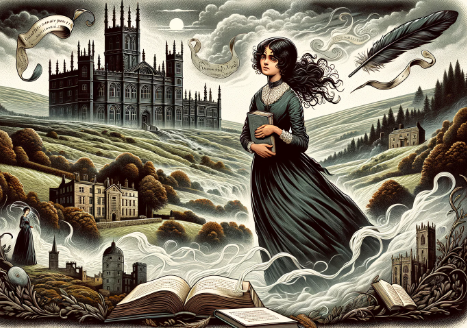Title: The Influence of Gothic Architecture in Jane Eyre
Introduction
The world of literature is often shaped by the settings within the stories, and in “Jane Eyre,” Gothic architecture plays a pivotal role in establishing mood and character. Understanding this architectural influence not only enhances readers’ appreciation of the novel but also highlights the intertwined relationship between setting and narrative.
Gothic Structures as Symbols of Emotion
Gothic architecture is characterized by its towering spires, intricate detailing, and often foreboding presence. In “Jane Eyre,” the imposing figure of Thornfield Hall serves as a perfect example. The mansion is not just a backdrop but a reflection of the emotional states of its inhabitants. Its dark corridors and hidden rooms embody secrets and repressed feelings, mirroring Jane’s own struggles. As she moves through the labyrinthine space of Thornfield, the architecture accentuates her internal conflict and sense of isolation.
The Atmospheric Connection
The atmosphere created by Gothic architecture adds a layer of symbolism to the narrative. The use of stark contrasts—between light and dark, openness and confinement—reinforces the themes of freedom and entrapment. For instance, the cold, dark landscapes surrounding Thornfield contrast sharply with Jane’s moments of joy and connection, such as those spent with Mr. Rochester. This interplay not only reflects Jane’s emotional journey but also emphasizes the gothic elements of suspense and mystery that keep readers engaged.
The Role of Nature in Gothic Imagery
Gothic architecture in “Jane Eyre” is not confined to man-made structures alone; nature also plays a significant role. The depiction of the moors, with their wild and untamed beauty, serves as a counterbalance to the oppressive nature of the Gothic edifices. These natural elements provide solace and symbolize Jane’s yearning for freedom and self-discovery. The moors become a place of refuge and empowerment, contrasting sharply with the constraints of Thornfield, thereby illustrating the dualities present throughout the novel.
Conclusion
Gothic architecture in “Jane Eyre” is more than just a stylistic choice; it is a crucial narrative device that enhances the story’s emotional depth and complexity. By exploring how these architectural elements contribute to themes of isolation, mystery, and self-discovery, readers can gain a richer understanding of Charlotte Brontë’s masterpiece. Dive deeper into this fascinating topic or revisit the novel with fresh eyes, and discover how the world of Gothic architecture shapes every page of “Jane Eyre.”
